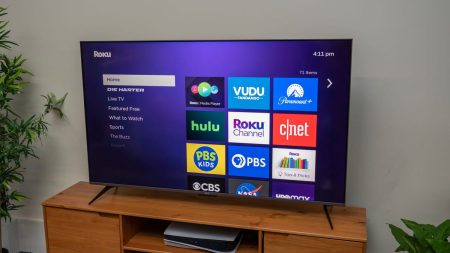Amazon’s Shift in Diversity and Inclusion Practices: A Reflection of Changing Corporate Priorities
Introduction: Amazon’s Subtle Change in Diversity Messaging
In September 2024, Amazon made a subtle but significant change in its annual 10-K report, removing a reference to diversity and inclusion. This removal, while minor in wording, signals a broader shift in the company’s approach to diversity, equity, and inclusion (DEI) practices. The omission occurred under the “Human Capital” section of the report, where Amazon previously emphasized its commitment to inclusion and diversity as part of its strategy to become the “Earth’s best employer.” This year, however, the language was noticeably absent, sparking curiosity and concern about the company’s evolving priorities in this space.
The change comes amid a shifting political landscape, with the Trump administration actively dismantling DEI efforts across government agencies and federally supported programs. This broader context suggests that Amazon’s adjustment may not be an isolated decision but rather part of a larger corporate trend to reframe diversity initiatives in response to changing political winds. While Amazon has not entirely abandoned its DEI efforts, the subtle shift in language reflects a more cautious approach, potentially influenced by the current administration’s stance on diversity programs.
The Broader Corporate Retreat from Diversity and Inclusion Practices
Amazon’s decision to remove diversity-focused language from its 10-K report is not an isolated incident. In recent months, several major corporations, including Boeing, Meta, Walmart, and Target, have rolled back or disavowed their diversity programs. These changes appear to align with President Trump’s executive order, titled “Ending Illegal Discrimination and Restoring Merit-Based Opportunity.” The order instructs federal agencies to investigate large corporations, nonprofits, foundations, associations, and universities suspected of implementing DEI programs that could constitute illegal discrimination or preferences.
The executive order has created a climate of caution among corporations, many of which are now reevaluating their DEI initiatives to avoid potential legal or political scrutiny. While some companies have publicly distanced themselves from diversity programs, others, like Amazon, have taken a more diplomatic approach, framing their shifts as adjustments to outdated practices rather than outright reversals. This nuanced strategy allows companies to maintain a Commitment to diversity while avoiding direct confrontation with the administration’s policies.
Amazon’s Diplomatic Approach to Diversity and Inclusion
Amazon’s approach to DEI has been more measured and diplomatic compared to other corporations. In December 2023, the company’s leadership informed employees that it was “winding down outdated programs and materials” related to diversity efforts, with plans to complete the process by the end of 2024. This message, delivered by Candi Castleberry, Amazon’s vice president of Inclusive eXperiences and Technology (IXT), emphasized the company’s ongoing commitment to creating a diverse and inclusive workplace.
Castleberry highlighted the importance of reflecting the diversity of Amazon’s global customer base and building an inclusive culture. While the language suggests a continued focus on diversity, the decision to retire outdated programs suggests a shift in how the company approaches DEI. This change may reflect an effort to align with the evolving political landscape while maintaining a commitment to diversity in a way that avoids direct conflict with the administration’s policies.
The Disconnect Between Policy and Practice
Despite the changes in messaging and programming, it remains unclear how these shifts are impacting Amazon’s workforce. On one hand, the company’s leadership continues to engage in activities that promote diversity and inclusion. For example, Amazon CEO Andy Jassy recently celebrated Black History Month by attending an event with the Black Employee Network (BEN), an employee-led group. Jassy’s participation and his LinkedIn post praising the group reflect a continued commitment to diversity and inclusion at the highest levels of leadership.
However, the removal of diversity-focused language from the 10-K report and the winding down of outdated DEI programs raise questions about the company’s long-term priorities. While Jassy’s actions demonstrate support for diversity initiatives, the broader shift in policy suggests a potential gap between the company’s words and its actions. This disconnect could have implications for employee morale, particularly among underrepresented groups who may view the changes as a step backward in Amazon’s DEI journey.
The Role of Political Influence in Corporate Diversity Practices
The changes in Amazon’s DEI practices cannot be viewed in isolation from the broader political climate. President Trump’s executive order has created a challenging environment for companies that have historically championed diversity initiatives. By targeting DEI programs deemed to constitute illegal discrimination, the administration has forced corporations to reevaluate their approaches to avoid scrutiny.
While Amazon has not fully abandoned its diversity efforts, the decision to remove diversity-focused language from its 10-K report reflects the company’s response to these political pressures. The shift underscores the influence of political winds on corporate policies and raises concerns about the potential erosion of DEI practices in the private sector. As other companies follow suit, the impact on diversity and inclusion in the workplace could be significant, particularly if these changes result in a lack of meaningful action to support underrepresented groups.
Conclusion: Navigating the Future of Diversity and Inclusion at Amazon
Amazon’s decision to revise its messaging on diversity and inclusion reflects a complex interplay of corporate strategy, political influence, and evolving societal expectations. While the company continues to emphasize its commitment to diversity, the removal of specific language from its 10-K report and the winding down of outdated DEI programs suggest a shift in how it approaches these issues.
The challenge for Amazon, and for other corporations navigating this landscape, will be to balance political realities with the need to maintain a diverse and inclusive workplace. As the company moves forward, its actions will be closely watched by employees, customers, and stakeholders who are eager to see whether Amazon’s commitment to diversity and inclusion will endure in the face of changing political winds. The coming months and years will reveal whether this shift in language and programming represents a meaningful change in direction or a temporary adjustment in strategy.












